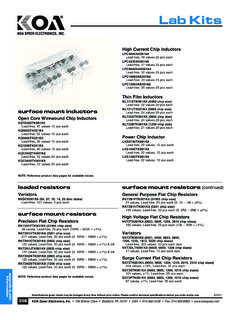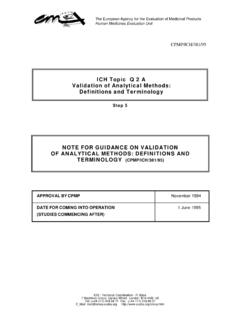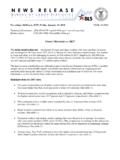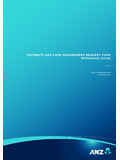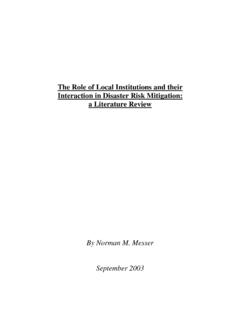Transcription of Caution & Terms - KOA Speer Electronics
1 Resistors10 KOA Speer Electronics , Inc. 199 Bolivar Drive Bradford, PA 16701 USA 814-362-5536 Fax: 814-362-8883 given herein may be changed at any time without prior notice. Please confirm technical specifications before you order and/or use. 11/23/15 Caution & Termsderating curvesIntroduction of the DeratingCurves Based on the TerminalPart TemperatureBackgroundRecent studies have led to better practices for miniaturizing high-power components in high-temperature automotive that require high-temperature resistors have increaseddramatically. Recently, derating guidelines based on the resistor's terminal temperature, such as the diagram in figure 1, have beenintroduced to respond to these by terminal temperature has already been used for metal-plate current-sense resistors with very low resistance values(such as the PSB and PSE series).
2 These resistors are used to sense large currents in inverters and converters, and nearby switchingelements or high-current conductors can lead to a local temperatureincrease at the resistor terminal beyond the temperature generated by the resistor itself. The techniques learned in designing these applications are now being extended to general-purpose of the Establishment of the Derating Curves Based on Ambient TemperatureThe traditional derating curve, which is based on ambient temperature,was defined by IEC and JIS during the vacuum tube era, long beforethe appearance of surface-mount resistors. At the time, there were noprinted circuit boards, and cylindrical resistors with lead wires wereheld above the board by lug terminals, as shown in figure of the shape of the resistor, the heat generated by its useis dissipated through three pathways.
3 One path is conduction throughsolids such as the terminal. The second path is convection, usuallyheat transfer into the air by natural convection. The third path is radiation of infrared. Of these pathways, conduction increases with the area of solid connected the resistor. Convection and radiationincrease with the total surface area of the cylindrical resistors with lead wires are mounted on lug terminals, the lead wire is long and thin, so the thermal resistance to conduction is high, and heat dissipation through that path is low. On the other hand, the dissipation of heat by convection and radiationis high, because the surface area of the resistor is large. Simulationshows that 80% to 90% of the heat from a cylindrical, lead-wire resistor is dissipated directly into the ambient air. The temperature of the resistor can be calculated by adding the temperature risecaused by self-heating to the ambient temperature.
4 Because the ambient is sufficient to estimate the thermal resistance for most of the heat dissipation, the traditional derating curve was based on Dissipation of Surface Mount ResistorsFigure 3 shows the main heat dissipation paths for modern surfacemount resistors. This type of resistor has only a small surface area, so convection and radiation have proportionally less heat the other hand, since the device is directly connected to the PCBpattern by a large part of the surface area, conduction will be the primary path for heat dissipation. In general, conduction through theterminal to the board represents over 90% of the heat dissipation,even when convection and radiation are presumed to be at their maximumlevels. Therefore, the terminal temperature, on the main heat pathway,is the best location to monitor for controlling power Curve Suitable for the Surface Mount ResistorAs shown in figure 4, when a given amount of power is applied to theresistor, any given point on the resistor's surface will have the sametemperature rise over the terminal temperature, regardless of ambienttemperature.
5 This is because there is very little heat dissipation fromthe resistor s surface to the ambient , surface temperatures at a given power will differ betweendifferent PCB designs, since the terminal temperature will be resistors are mounted close to each other or other heat-generating devices, as shown in figure 5, there is a possibility that the temperature will be higher than the 70 C ambient temperaturethreshold used in the traditional JIS/IEC derating traditional derating curve bsaed on ambient tempreature usuallyuses 70 C as the ambient temperature above which parts are to bederated. There will be no problem if resistors are used with sufficientelectrical and thermal margin, but recent trends to miniaturization, high power density, and high-temperature use have reduced marginson derating based on terminal temperature is a way to betterrepresent the capabilities of the part.
6 KOA will provide a derating curvesuitable for surface mount resistors, based on testing under conditionswhere power rating is defined in Terms of terminal temperature (as seen in Terms & definitions).RatedTerminal partTemperatur eMaximumTerminal partTemperatureRated Power ratio (%)0100 Terminal partTemperatur eFigure 1. Derating curve based on the terminal part temperatureL TT TT Lead wireLug terminalLug terminalResistorConvectionConductionRadi ation80 90%Figure 2. Heat dissipation of cylindrical resistorsC TT Conduction Over 90%ConvectionRadiationFigure 3.
7 Heat dissipation of surface mount resistorsT TT TT TemperatureTTTTLTMTHTL TTM TTH TTerminal part temperatureHighLowTH HighTM MediumTL LowTerminal part temperatureFigure 4. Contributing factor to the temperature of the surface mount resistor Caution & Termsderating curvesHow to Use the Derating Curve Based on the Terminal Part TemperatureHere are some examples on using terminal temperature derating thatlead to greater factors of safety, reduction in number of resistors, oruse of a smaller component. The conditions for these examples are:(1) Ambient temperature of the board: 100 C(2) Terminal temperature of the surface mount resistor: 120 C(3) Actual power load: (4) Required margin of safety below rating according to designer s internal guidelines: 50%The required power rating for the resistor using the ambient-temperaturederating curve is calculated from conditions (1), (3), and (4).
8 Figure 6shows this result. For KOA s RK73B resistor series, either a single 2B(1206) size resistor or two 1J (0603) size resistors will be , when a resistor is selected using the terminal-temperaturederating curve, which is better suited to surface-mount parts, conditions(2), (3), and (4) show that a single 1J (0603) size RK73B resistorwould be seen above, the number of resistors and the mounting area can be reasonably reduced by using the proper derating curve based onterminal temperature, and this will lead to cost curve suitable for the surface mount resistorAs shown in Table 1, for the surface mount resistors, there are productsthat have 2 rated powers for the same type in the rating column. Thehigh rated power is basically available and applicable only to boardswith adequate heat dissipation design for example multilayer boards,DCB (direct copper bonding) boards and single layer boards with wideheat dissipation area land.
9 Therefore, the horizontal axis of the deratingcurve for high rated power is only defined with the terminal part temperature and please be careful that the conventional deratingcurve defined by the ambient temperature cannot be used in this these products, - will be shown in the rated ambient temperature column which means Not Applicable. In addition, we implement load life tests for the products with highrated power by using a test board that can specially control the terminalpart the case of Table 1, there will be 3 derating curves as shown fromFigure 8 to Figure to use each derating curve is shown as the is the rated powerWhen the terminal parttemperature can bemeasured:The derating curve in Figure 8 can beapplicable and it can beused with rated up to terminalpart temperature 125 derating curve withthe horizontal axisbased on the terminalpart temperature super-sedes the conventionalderating curve with the horizontal axis basedon the ambient temperature.
10 Therefore,even when the ambienttemperature exceeds100 C, it can be usedwith rated power long as the terminalpart temperature isbelow 125 the terminal part temperature is notmeasured and only theambient temperature is measured:The product may beused by derating theload power from theambient temperature70 C according to theconventional deratingcurve shown in Figure9. However, as mentioned in the past descriptions, the temperature of the resistor differsaccording to the wiring patterns and heat generating components nearby,even when the ambient temperature is the same, so it is not a deratingmethod with good is the rated powerManaging the terminal part temperature is the requirement to applythe rated power Only the derating curve with the horizontal axisbased on the terminal part temperature as shown in can beused but it can assure up to the high power.








